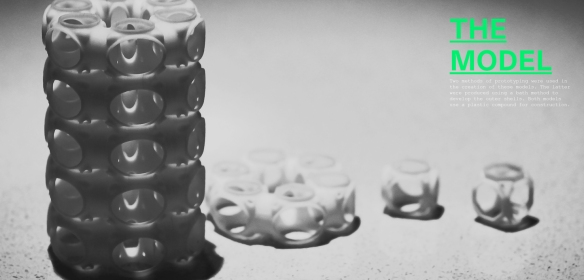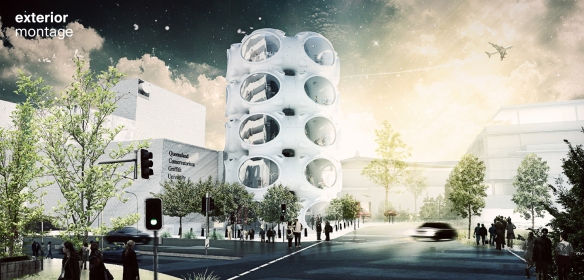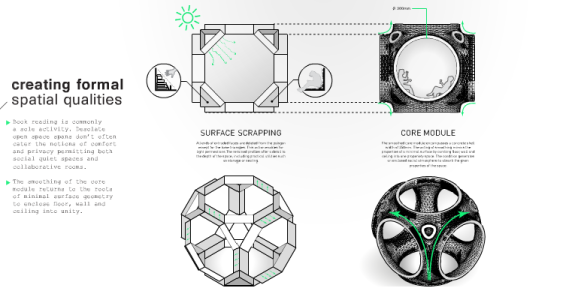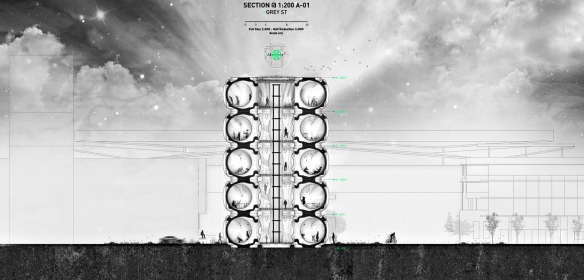Moe Shahin explores how in the 20th century the drive and need to define order is through creating a contextual relationship. Instead of challenging the defining of space, Moe explored the use of the Cartesian grid, to stray away from the static programmatic spaces, and through space packing and connections to explore open plan design. Program becomes less rigidly defined, and becomes elastic in function throughout the design. The simple stacking of a unit yields a complex and richly connected flow of program. Check it out after the jump!
STUDENT: Moe Shahin
SCHOOL: Queensland University of Technology
PROFESSORS: Ruwan Fernando, Glenda Caldwell
COURSE: 4th Year – Generative Design Studio
YEAR: 2012
“The architecture of the 20th century searched for a unified order. It was always been about cutting out a piece of context and establishing stable order within it. The ‘miesan’ order of the grid encouraged divisions in the space and plan, provided an efficient method for construction and manufacture but it ended up doing is dismantling the humanities of our building.
We use this order as if it were the only acceptable model for our living spaces and in doing so; we ignore countless other forms that may lead to more efficient, more beautiful, more economical and certainly less worn-out environments. Instead of fighting it, my project intended to add more depth to it. The Cartesian grid provides architecture a profound tectonic articulation and builds ability and in a sense, it translates our ideological concepts into pragmatic solutions.
Metabolists declared that their proposals were explicitly created to accommodate change.
They declared traditional master plans as obsolete static concepts, suggesting form proposals that are spatially dynamic. The project here intends to adopt the notion of an architecture that is spatially elastic and enduring.
Model Animation – Generative Design Studio from moe.studiomox on Vimeo.
The lean towards the characteristics of geometry endorse both the freedom of creative concepts by celebrate versatility through a library potential forms as well as the proponents of tectonic stability. Very few polyhedral are found in the natural world. However, polyhedral in Architecture constitute both freedom in design versatility as well as grounded structural probabilities – bridging the gap between the extremes. Congruent polyhedral that can be stacked together to compose a space in entirety were identified as the key project parameters due to the architectural desire to move across planes.
Desolate open space spans don’t often cater the notions of comfort and privacy permitting both social quiet spaces and collaborative rooms. The smoothing of the core module returns to the roots of minimal surface geometry to enclose floor, wall and ceiling into unity.
In order to achieve an architectural singularity, the critical volumes break out of the strong edge of the existing context by adjoining the existing area of the specified site scope. The most critical criterion of architecture is not about looks, but rather the quality of the spaces within.
The minimal surface topology inculcates a sense of possibility indoctrinated by metabolist sentiments. Each room is visually open to nature on all sides and above; providing a sense of integration with the outside. The sense of inhabiting the space is not of forms connected to other forms, but of flow. The radial anatomy ensures no dead space is offered by the spatial plan.
The use of geometric structures – [polyhedral] in this project presents a step forward towards a new order for dynamic architecture – one that could contribute to the visual and spatial expression of organized and democratic society. The future for the idealistic and open-ended nature of geometric morphologies suggests new possibilities for generative application, devoid of the generic qualities of the modern bare box. “
Check out the rest of Moe Shahin Thesis at:
http://issuu.com/studiomox/docs/playingarchitecture







